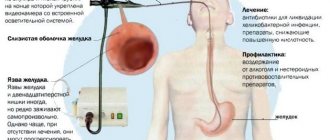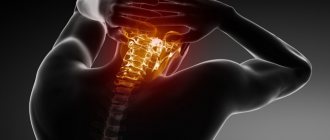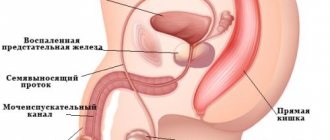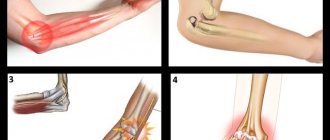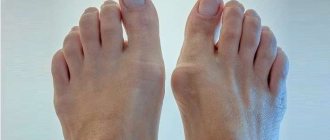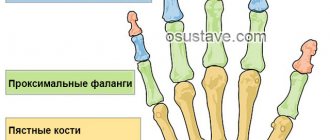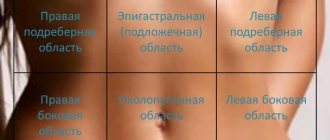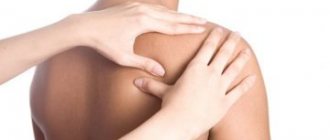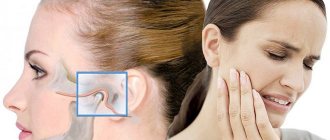The phrase headache on the left side in most patients is clearly associated with the concept of a bursting or pressing feeling that pierces the entire back of the head, the temples and brow ridges. However, this is not always the case - often the pain that arises is clearly localized in the area of the left temple. The question arises - why does the left temple hurt and what to do about it?
Pain in the left temple is much more often observed in people who suffered any head injuries in childhood. Injuries received at birth especially affect this.
Causes of pain in the left temple
If your temple hurts on the left side, then you need to find out the reasons for this. Every person experiences short-term headaches at some point in their lives. Usually it can be easily removed with a tablet of citramon or spasmalgon.
Repeated attacks indicate a serious illness that requires urgent treatment.
Isolated cases
A single case of temple pain is most often the result of temporary problems in the patient, such as:
- weather dependence,
- consequences of stress, overwork, lack of sleep,
- viral and bacterial infections (sore throat, acute respiratory infections, influenza),
- errors in nutrition,
- consequences of head injuries,
- hangover syndrome.
In most cases, these problems can be successfully corrected. The pain syndrome disappears as soon as the general condition of the body returns to normal.
Chronic temporal pain
In most cases, it is quite intense and is sharp, shooting or pulsating in nature. The etiology of pain is quite diverse:
- 1. Migraine is a periodic pain in the temple, which is accompanied by sensitivity to light and nausea. It is one of the forms of primary headache (that is, not a symptom, but an independent disease). The pain affects the frontal and occipital areas. It is often so strong that it cannot be treated with analgesics.
- 2. Increased intracranial pressure is characterized by bursting pain that presses on the temples. Sudden movements may be accompanied by dizziness. The patient is feeling nauseous. Vision gradually deteriorates. A characteristic symptom of ICP is bags under the eyes.
- 3. Loss of vascular elasticity during arterial hypertension leads to persistent increases or surges in blood pressure and frequent headaches.
- 4. Severe headaches during pregnancy and menopause are a reaction to rapid hormonal changes in the body.
- 5. Left-sided arteritis (inflammation of the temporal and carotid arteries located on the left) is characterized by throbbing pain in the left temple and around the eye. Body temperature rises, vision gradually deteriorates, the skin of the temple becomes painful when pressed.
- 6. Cervical osteochondrosis is also a cause of temporal pain. Salt deposits disrupt the innervation of the cervical spine and lead to pinching of the main artery. This leads to oxygen starvation of the brain.
- 7. Injury to the left temporomandibular joint provokes temporal pain on the left, which radiates to the ear, back of the head, neck and sometimes even reaches the shoulder.
- 8. During a stroke, the vessels of the head are injured, and hemorrhages in the brain can occur. This is accompanied by unpleasant neurological symptoms (impaired coordination, slurred speech, loss of consciousness).
- 9. Left-sided throbbing temporal pain is characteristic of a brain tumor growing in this area. The disease is accompanied by decreased vision, hearing, memory, and attention. The patient suffers from nausea and dizziness.
- 10. Narrowing of the blood vessels in the brain (atherosclerosis) leads to disruption of blood circulation, and therefore the nutrition of the brain. Memory and attention deteriorate. A person constantly feels tired and apathetic.
- 11. Sinusitis, otitis, inflammation of the nerves of the cervical and facial spine, gumboil or pulpitis of the tooth can also be left-sided. These diseases are accompanied by sharp and excruciating pain, which increases with bending and turning.
- 12. Pinching of the trigeminal nerve is felt as severe pain in the temple, radiating to the area of the lips, cheeks, and eyes. During an attack it is so strong that the patient is unable to move.
- 13. Cerebral angiodystonia (impaired tone of arterial and venous vessels) is accompanied by temporal pain, insomnia, pressure surges, dizziness, and tinnitus. Additional symptoms of cerebral angiodystonia are depression, bad mood, irritability.
Nature of pain and typical symptoms
Pain in the temple on the left can be of a completely different nature. Unpleasant sensations can be periodic or chronic. The first ones are characterized by a paroxysmal course. Outbreaks occur at certain time intervals. Often, cephalgia occurs against the background of overwork and a stressful situation. Even joyful events contribute to the development of a sudden attack.
The chronic nature of pain consists of a constant monotonous course. If a diagnosis of tension-type headache (tension headache) has not been previously established, then it is worth considering why the headache on the left side constantly hurts. Perhaps we are talking about a dangerous disease, which can only be diagnosed by a specialist.
Soreness in the head, according to the nature of its manifestations, can be:
- pulsating;
- aching;
- squeezing (feeling like a helmet);
- tingling;
- monotonous.
Patients, describing their feelings, explain their current condition with the following symptoms:
- Severe pain in the head and radiates into the eye socket.
- When trying to change the position of the body, the pulsation intensifies, the temple presses.
- After trying to quickly get out of bed, I begin to feel very dizzy and my coordination is impaired.
- It is difficult to remember events that happen, especially those that happened during an attack.
- There is a ringing in the ears, a buzzing in the head.
- In bright light the pain intensifies.
- Often the attack is accompanied by nausea and vomiting.
Some note that they already know that they will soon have a headache. Patients, a few minutes or hours before the attack, begin to smell, and bright flashes of color appear in their eyes. In medicine this is called an aura. Precursors of pain are typical for migraine patients.
Why does my head hurt so bad? We will consider the main causes of the disease below.
When should you see a doctor?
If attacks of temporal pain are often repeated and chronic, the patient needs examination and qualified medical care. The following symptoms should alert the patient and force him to see a doctor:
- increased pain during movement and physical activity,
- impaired coordination of movements,
- memory loss,
- fear of light and loud sounds,
- nausea, dizziness,
- tinnitus,
- motion sickness in transport.
Do you need a massage?
For headaches, regardless of location, massage can be helpful. It can be done either independently or in massage rooms. Experts know which points to press on, so it’s best to turn to professionals. If it is not possible to go to a massage therapist, then you can adhere to the following general recommendations:
- If there is severe pain in the left temple of the head, then you should try to press on the reflex zones that run along the line of the spine and shoulders in the thoracic region. Painful sensations in this case can be temporarily relieved quite quickly.
- In the area of the bridge of the nose there are reflex points that need to be pressed firmly in a circular motion, moving slightly to the occipital area along the middle line of the parting. If pain appears when you press hard on the reflex points, the pressure should be eased.
- You can eliminate pain in the head if you thoroughly work your neck in the area of the base of the skull (you need to massage both sides, regardless of which temple hurts).
- Experts also recommend massaging the scalp, moving from the eyebrows to the back of the head.
Most often, pain in the temple is not a consequence of any pathology in the body, but occurs due to its functioning in an unnatural or extreme mode: physical overload, lack of sleep, prolonged anxiety, mental exhaustion, stress.
Diagnostics
Early diagnosis is very important for temporal pain. The earlier the diagnosis is made, the more successful the treatment will be. And this is a guarantee that the intensity and frequency of attacks will soon be significantly reduced and disappear over time.
To make a correct diagnosis and determine the prognosis of the disease, the doctor must conduct an anamnestic survey of the patient. The patient is asked to answer several questions:
- 1. What is the average duration of a painful attack?
- 2. How can you characterize the pain: throbbing, aching, pressing, cutting?
- 3. Is temporal pain accompanied by decreased mental activity and memory impairment?
- 4. Does the pain syndrome extend to the area of the eyes, back of the head, and ears?
- 5. What is the frequency of recurrence of pain attacks (single or chronic)?
- 6. What other symptoms can characterize the attack (insomnia, poor coordination of movements, deterioration of vision and hearing)?
Sometimes, following the answers, the doctor is able to make an accurate diagnosis without conducting additional examinations.
For prolonged temporal pain, a neurologist usually prescribes the following diagnostic procedures:
- general blood analysis,
- X-ray of the cervical spine,
- computed tomography of the brain,
- magnetic resonance imaging.
Based on the results of the examination, the doctor makes an accurate diagnosis and prescribes a treatment regimen.
Traditional medicine
For throbbing pain in the left temple, various folk recipes can help. One of the most common and used at home is a remedy based on mint decoction. Take a tablespoon of fresh chopped or dried mint per 250 ml of boiling water. Next, you need to grind the white bread crumb, add a spoonful of table vinegar to it and add it to the prepared mint infusion. The consistency of the mixture should be similar to a very dense dough. From the resulting mass you need to make a cake and apply it to the problem area before going to bed.
The following recipes may also help:
- Grate the horseradish (about 200 g) and fill it with vodka. We insist for 24 hours. Then add 250 ml of fresh carrot juice, 250 ml of honey and lemon juice (from one medium lemon) to the tincture. The mixture must be mixed thoroughly and stored in the refrigerator. For persistent headaches in the left temple area, it is recommended to take the remedy three times a day for 1-2 months. This folk recipe helps especially well if the pain syndrome is directly related to hypertension (high blood pressure).
- Mix viburnum juice and honey in a one to one ratio. The resulting mixture should be taken a small spoon three times a day on an empty stomach (until the pain in the head is eliminated).
- For pain in the area of the left temple, compresses that can be made from a decoction of celandine are excellent.
Treatment of pain in the left temple
Treatment must be comprehensive. Along with drug therapy, alternative medicine methods can be used. It is equally important to get rid of bad habits, switch to a healthy lifestyle, and eat rationally.
Drug therapy
The most commonly used method of treating temporal pain and its causes remains drug therapy:
- severe pain is relieved with painkillers and antispasmodics,
- bacterial and viral infections are fought with the help of antimicrobial and antiviral drugs in combination with anti-inflammatory and immunomodulating agents,
- to regulate changes in blood pressure, diuretics and antihypertensive drugs are prescribed,
- the painful manifestations of menopause are managed with the help of hormone replacement therapy,
- the consequences of stressful situations are eliminated with sedatives and muscle relaxants.
Treatment should be carried out under close medical supervision.
Physiotherapy and reflexology
The residual effects of inflammatory processes and infections that are the cause of temporal pain are well dealt with by physiotherapeutic procedures prescribed to the area of inflammation.
Reflexology, which includes elements of oriental medicine - acupressure and acupuncture - helps to relax and get rid of stress and tension headaches.
Surgical intervention
The presence of neoplasms, high intracranial pressure, and serious diseases of the spine may require surgical intervention. Otherwise, it is impossible to alleviate the patient's condition.
Treatment
After diagnosis, doctors treat the disease, which causes headaches in the left temple area. In this case, to eliminate pain, the following groups of medications can be prescribed:
- Sedatives, antidepressants. If pain occurs against the background of nervous tension, depressive and stressful conditions, or psycho-emotional disorders, sedatives or antidepressants may be prescribed. These can be either simple remedies (for example, oregano, valerian, lemon balm, magnesium, etc.) or potent medications (for example, Prozac, Azilect, Lerivon, etc.). The choice of medications in each case is made separately depending on the patient’s condition, concomitant diseases, age and other factors.
- Antihypertensive drugs. If you have a headache in the left temple area, antihypertensive medications are often prescribed. This is a fairly broad group of medications, which are also selected separately in each individual case depending on the indications and personal characteristics of the patient.
- Muscle relaxants. They are often used if the pain syndrome is directly related to spasms of the cervical muscles, or in cases of impaired blood supply to the structures of the brain (when the pathological focus is localized in the neck area). Muscle relaxants are highly valued by modern doctors.
- Antibiotics. They are almost always prescribed when headaches in the left temple area occur due to the penetration and development of a bacterial infection (its development can be observed both in the brain structures and in the internal organs).
If you have constant headaches, it is recommended to stop drinking and smoking, give up any bad habits, and not take strong pills without a doctor’s prescription.
Home symptomatic therapy
We should also not forget that folk wisdom has accumulated a rich arsenal of fighting localized headaches with homemade, improvised remedies. This includes the use of medicinal drinks, teas, decoctions and infusions of herbs, compresses and contrast showers.
- An alternative to self-massage during a severe attack of spasm in the head can be a compress: hot or cold. If the headache hurts so much that a person cannot find the strength to massage the painful area, then it is better to put him to bed and apply the method of contrast compresses for a quarter of an hour.
- Black coffee can be an effective helper in preventing throbbing in the head. One cup of freshly brewed drink will be enough to relieve and minimize pain; you can also add a cup of green tea and a little chocolate.
- You can prepare chamomile tea yourself or purchase it at a pharmacy. Hot tea from flowers will help relieve a sharp pulsating spasm in the temples if you drink a cup and then lie down for an hour to an hour and a half.
- A glass of fresh orange juice with the addition of lemon juice has long been considered a therapeutic drink for headaches: the effect can be enhanced by taking vitamin C tablets.
It is important to provide fresh air access to the room where a patient with a headache attack is located. The temperature in the room should also not be too high; it is better if the room is cool; the patient should be covered with a warm blanket.
https://youtu.be/uJFQ2-4r_n4
Prevention
Head pain on the left side often recurs, complemented by new symptoms, which causes even greater discomfort and worsens well-being. Pain syndrome can be prevented. It is enough to follow the recommendations of experts:
- Walk outdoors more often.
- Eat properly.
- Do not get carried away with the use of medications.
- Treat colds and infectious diseases in a timely manner.
- If you have a head injury, consult a doctor immediately.
- Establish a work and rest schedule.
- Do physical activity daily.
As a preventative measure, you can drink decoctions and infusions of medicinal herbs instead of regular tea.
https://youtu.be/PGq-C8yGKBo
Did you like the article? Save it!
Still have questions? Ask them in the comments! Cardiologist Mariam Harutyunyan will answer them.
Ivan Grekhov
Graduated from the Ural State Medical University with a degree in General Medicine. General practitioner
What to do?
Why does my left temple constantly hurt and ache? What to do and what to do if you find that the discomfort in your left temple is chronic?
You can try to cure it yourself or ignore the problems by consuming large amounts of painkillers. But these measures will only eliminate the symptom; the cause of the pain will remain.
Diagnostics
If you notice that your temple aches every day, immediately contact your local doctor. The article has already mentioned that such sensations are a sign of dangerous diseases:
- arteritis;
- stroke;
- brain tumors.
Each of these diseases is dangerous for humans, so seeing a doctor on the first or second day of the onset of temporal pain will not only save you from the disease, but in some cases will also save your life.
The therapist will collect symptoms, why the left temple often hurts and throbs, and will refer you for tests. First of all, you need to rule out infections and allergies. If the aching pain in the head is not caused by these reasons, then the patient is sent for a more serious diagnosis:
- Ultrasound of the brain and heart;
- MRI;
- Doppleroscopy of the cardiovascular system.
After collecting an anamnesis, the patient is referred to a specialist depending on the diagnosed disease: a neurologist, endocrinologist and others. If the disease is not dangerous, the therapist carries out the treatment independently. If the disease has reached the last stage, you will have to stay in the hospital.
Related factors
In addition to the main causes of the attack and the syndrome that accompanies headache spasms in the left temple, experts also identify associated factors. Against the background of these factors, the pathological condition progresses:
- sudden changes in weather conditions, especially for weather-sensitive people;
- nervous overstrain and psycho-emotional stress;
- addiction to alcohol and smoking tobacco;
- consumption of nitrites with low-quality food;
- regular intake of phenylethylamine when consuming sweeteners and chemical sweeteners in food;
- ingestion of monosodium glutamate into the body with fast food products.
Given the existing constitutional predisposition to frequent headaches against the background of provoking causes, concomitant factors act as a “war elephant”, pushing painful spasms forward.
https://youtu.be/jGTd5VGVunA
Mechanism of occurrence
Painful sensations occur due to irritation of the nerve trunks. First, a pathological impulse is formed in the nerve fibers, as a rule, this occurs due to some provoking factor, mechanical damage or inflammatory process affecting nerve processes or muscle tissue.
As a result, the pathological process affects the structure of neurons, and the nerve fibers cease to perform the function of “inhibition”.
As a result, a short-term pain impulse is formed that spreads throughout the entire nerve trunk. This is how a sharp pain arises, which is often accompanied by pulsation.
It is important to realize that pain in the temporal region of the head is not an independent disease, it is a concomitant symptom indicating some kind of disorder in the body.
Diagnosis and treatment
If you experience pain in your temples, you should contact a specialist who will give you a referral for diagnosis. For prolonged headaches, the patient is referred for a comprehensive examination of the cardiovascular, nervous system, head, spine, and blood vessels. Thanks to this approach, doctors discover the underlying disease that provokes the unpleasant symptom.
What to do with temporal pain? Treatment depends on the cause of the pain. Correct diagnosis and following the recommendations of a specialist will help cope with the disease. If the doctor approves, you can add aromatherapy, massages, taking herbal infusions, eating fresh fruits and vegetables, and relaxing baths with decoctions of medicinal plants to the therapeutic course.
- If the cause of a sharp headache on the left side in the temple area is a migraine, you can take painkillers, which will not always help. It is advisable to take specific drugs that help specifically with this pathology (triptans). The neurologist prescribes sedatives, vascular drugs, nootropics, antispasmodics.
- In the treatment of infectious diseases, highly specialized specialists (ENT) will help. The patient may be prescribed antipyretic and anti-inflammatory medications.
- For colds and hangovers, it is recommended to use drugs that relieve swelling of blood vessels. You can use anti-inflammatory drugs (Ibuprofen), sorbents (Enterosgel, activated carbon), Aspirin, honey.
- If the cause of pain is cold muscles of the neck and back, the doctor will prescribe a comprehensive treatment, which includes warming ointments “Fastum-gel” and “Finalgon”.
- Treatment of brain oncology, stroke, and skull injuries is carried out comprehensively. Here you cannot do without consulting several specialists.
- If cerebral circulation is impaired, the patient is admitted to a hospital. Qualified assistance and bed rest will help you recover from a dangerous illness.
- For osteochondrosis, complex therapy is recommended, which includes physical therapy, physiotherapy, the use of pain-relieving ointments, and wearing an orthopedic cervical collar.
- For jaw injuries, treatment depends on the recommendations of the maxillofacial surgeon. Most often, therapy consists of surgery.
- In case of intoxication of the body, which is associated with poisoning, gastric lavage, taking activated carbon, drinking plenty of fluids, and antipyretics are prescribed (if the temperature rises above 38.5 ° C).
- If the cause of a headache in the left temple is hypertension, the patient is prescribed planning a work and rest schedule, regular use of medications that normalize blood pressure, diuretics, prevention of stressful situations, and walks in the fresh air.
- With increased intracranial pressure, neurologists prescribe antispasmodics, diuretics, and physical therapy. It is recommended to avoid overwork, stressful situations, and limit salt intake.
Important: Treatment will be effective only after the doctor accurately determines the cause of the headache in the area of the left temple.
You can try to eliminate temporal pain using traditional methods. These can be decoctions, herbal infusions, medicinal teas, contrast showers, compresses, a brewed cup of black coffee, freshly squeezed orange and lemon juice, baths with the addition of aromatic oils, acupressure self-massage.
Provoking factors
https://youtu.be/FACeP1e2tAg
Headache in the temples and subsequent nausea are provoked by nociceptors located in the head and neck. The nerve tissues of the brain themselves do not hurt because they do not have pain receptors.
Under the influence of a stimulus, the nociceptor sends a signal through nerve fibers to the nerve cells of the brain, as a result, pain appears in the temples.
The mechanisms of headaches are divided into 6 types:
- Vascular headache (VSD). Occurs when venous tone is weakened, dilation and spasm of the arteries, impaired blood supply, accompanied by a delay in blood flow and oxygen starvation.
- Liquorodynamic headache. It occurs due to changes in intracranial pressure, displacement of brain structures against the background of normal ICP.
- Muscle tension headache. It begins with the activation of impulse transmission in the neuromuscular synapse and is caused by muscle tension due to the irritating effect of various factors.
- Neuralgic headache. It is provoked by stimulation of nerves by extraneural and endoneural disorders, pathologies in the parts of the central nervous system responsible for pain relief.
- Mixed headache. It is a combination of the above mechanisms, operating simultaneously or alternately.
- Psychology, or central headache, is caused by disruptions in the metabolism of serotonin, catecholamines and endogenous opiates with subsequent dysfunction of the antinociceptive (pain-relieving) system.
Each factor is accompanied by a reason that answers the question of why a headache occurs; it can be a serious illness, including a life-threatening one.
First aid for pathological conditions
Shooting pain in the right temple is a dangerous sign; when it appears, it is better to immediately consult a doctor to determine the cause of the syndrome. If you endure unpleasant discomfort for a long time, serious visual and hearing problems may develop. The patient's psychological state may deteriorate.
With intense spasms in the temple on the left, a stroke of the “gray matter” is possible. If strong lumbagoes appear in the head, you should monitor their frequency and duration. If the pain is one-time in nature and is not accompanied by additional symptoms, the following measures can be taken:
- When your temple is pulsating, it is better to take a walk in the street, a park, or ventilate the room well.
- Wash with cool water and take a shower.
- Perform a temple massage.
- Reduce lighting intensity and eliminate extraneous sounds.
- Relax, get a good night's sleep.
- Take a pain reliever.
If the patient is sure that spasms in the left temple are the result of a hangover or a cold, then you can take a medication that reduces the intensity of unpleasant symptoms of ARVI or flu. Sometimes it is recommended to use traditional medicine recipes that help eliminate vascular swelling and nourish the “gray matter” with vitamins and microelements.
When your temple throbs immediately after eating, you need to carefully study the composition of the food. If a food that causes unpleasant discomfort has been discovered, it is recommended to exclude it from the diet. If you need to buy ready-made food, it is better to give preference to baked goods, salads and pies.
With intense spasms in the left temple, a stroke of the “gray matter” is possible
